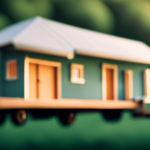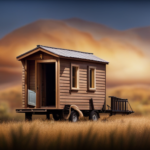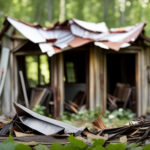Beginners Guides
How Big Is The Company Tumbleweed Tiny House
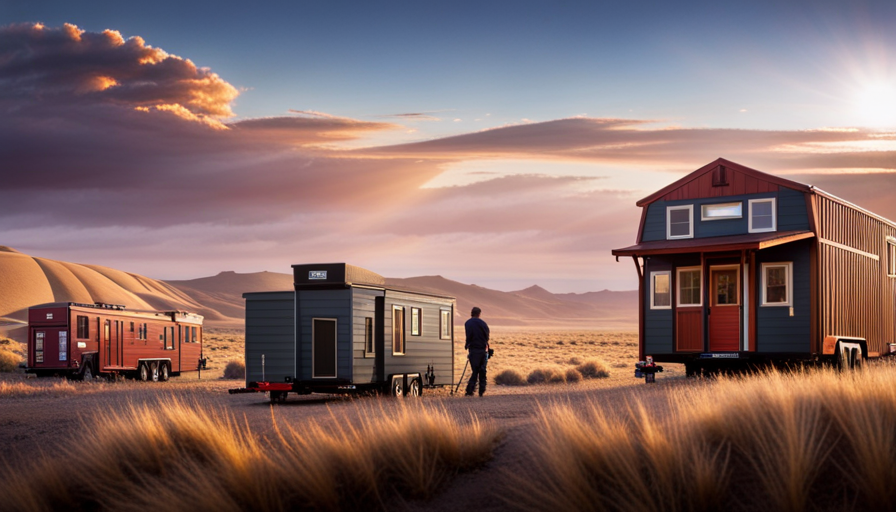
Ever curious about the actual size of Tumbleweed Tiny House? Get ready to be astonished as I reveal the captivating universe of this groundbreaking company.
Tumbleweed Tiny House has been revolutionizing the housing industry for years, and their impact on the tiny house movement cannot be overstated. With their unique and customizable designs, Tumbleweed Tiny House has captured the hearts of homeowners all over the world.
But it’s not just their designs that set them apart; it’s also the team of skilled professionals behind the scenes. From architects to engineers, each member of the Tumbleweed Tiny House team brings their expertise to create truly remarkable homes.
And it’s not just homeowners who are singing their praises; industry leaders have also recognized their talent, leading to exciting collaborations and partnerships.
So, join me as we delve into the history, growth, and future plans of Tumbleweed Tiny House. Get ready to be inspired by their incredible journey and the homes they create.
Key Takeaways
- Tumbleweed Tiny House is a leader in the tiny house movement and has revolutionized the housing industry.
- The company was founded in 1999 by Jay Shafer and offers innovative and customizable designs for tiny houses.
- Tumbleweed Tiny House prioritizes the use of sustainable and eco-friendly materials in the construction process.
- The company has a team of skilled professionals, including architects, designers, carpenters, and electricians, who create a range of floor plans and features to suit different needs and preferences.
History and Evolution of Tumbleweed Tiny House
The history and evolution of Tumbleweed Tiny House is quite fascinating! Tiny house enthusiasts have been captivated by the company’s innovative and customizable designs since its inception.
Tumbleweed Tiny House was founded in 1999 by Jay Shafer, who had a vision of living simply and sustainably. His passion for tiny houses led him to create a company that would cater to the growing demand for these unique dwellings. Over the years, Tumbleweed Tiny House has become a leader in the tiny house movement, inspiring individuals to downsize and embrace a minimalist lifestyle.
Tiny house communities have sprouted up across the country, with people coming together to share ideas and experiences. The company’s commitment to quality craftsmanship and attention to detail has made Tumbleweed Tiny House a trusted name in the industry.
Moving on to the next section, let’s explore their innovative and customizable designs.
Innovative and Customizable Designs
When it comes to the innovative and customizable designs of Tumbleweed Tiny House, one of the key points to consider is the range of floor plans and features they offer. Whether you’re looking for a compact layout or a more spacious design, Tumbleweed has options to suit your needs.
Additionally, Tumbleweed is committed to using sustainable and eco-friendly materials in their construction, making their tiny houses not only functional and stylish but also environmentally conscious.
Range of Floor Plans and Features
With a myriad of floor plans and features, Tumbleweed Tiny House is a treasure trove of customizable options for those seeking a compact yet luxurious living experience. Tumbleweed offers a wide range of sizes, ensuring that there is a perfect fit for everyone. Whether you’re looking for a cozy 150 square feet retreat or a more spacious 400 square feet home, Tumbleweed has you covered.
In addition to the range of sizes, Tumbleweed offers unique features that make each tiny house truly one-of-a-kind. From loft bedrooms and skylights to built-in storage solutions and energy-efficient appliances, Tumbleweed combines functionality and style in every design. These customizable options allow homeowners to create a space that reflects their personal taste and needs.
Transitioning to the next section, Tumbleweed also prioritizes the use of sustainable and eco-friendly materials in their construction process.
Sustainable and Eco-Friendly Materials
Choose sustainable and eco-friendly materials for your tiny house, and feel a sense of pride knowing that you are making a positive impact on the environment. At Tumbleweed Tiny House, we prioritize sustainable building practices to minimize our environmental impact. We believe in using materials that are renewable, non-toxic, and energy-efficient. Our team carefully selects each element of your tiny house, ensuring that it meets our high standards for sustainability. From the foundation to the roof, we use materials that are both durable and environmentally friendly. For example, our insulation is made from recycled materials, reducing waste and conserving energy. Additionally, we incorporate energy-efficient appliances and fixtures to further reduce your tiny house’s carbon footprint. By choosing Tumbleweed Tiny House, you can be confident that you are investing in a home that is not only beautifully designed but also environmentally responsible. Transitioning into the next section, let’s explore the skilled professionals and team behind Tumbleweed Tiny House.
Skilled Professionals and Team Behind Tumbleweed Tiny House
To truly appreciate the skilled professionals and team behind Tumbleweed Tiny House, you’ll be amazed by the diverse talents and expertise they bring to the table.
From architects and designers to carpenters and electricians, each member of the team plays a crucial role in creating these innovative and sustainable homes.
The architects ensure that the design maximizes space utilization while maintaining a pleasing aesthetic. The designers carefully select eco-friendly materials and incorporate energy-efficient features into the tiny houses.
The carpenters bring these designs to life, using their craftsmanship to construct sturdy and functional structures. Electricians ensure that the tiny houses are equipped with the necessary electrical systems for modern living.
Together, this team of skilled professionals works tirelessly to create homes that are not only beautiful but also environmentally conscious.
Transitioning into the subsequent section, their impact on the tiny house movement is undeniable.
Impact on the Tiny House Movement
Before diving into the impact of Tumbleweed Tiny House on the movement, it’s crucial to acknowledge the skilled professionals and team behind the company. They’re the driving force behind the success of Tumbleweed and they’ve made it what it is today.
Now, let’s shift our focus to the impact of Tumbleweed on the tiny house movement. The company has played a crucial role in popularizing the concept of tiny living and it’s inspired countless individuals to embrace a simpler, more sustainable lifestyle.
The economic impact of Tumbleweed can’t be understated, as it has created job opportunities for builders, designers, and suppliers in the tiny house industry. However, it’s important to note that affordability challenges still exist for many people interested in tiny living.
Despite this, Tumbleweed’s innovative designs and commitment to quality have made tiny houses more accessible to a wider audience.
Moving forward, let’s explore some customer testimonials and success stories to gain further insight into the impact of Tumbleweed Tiny House.
Customer Testimonials and Success Stories
Imagine stepping into your dream home, a cozy and sustainable sanctuary that perfectly embodies your values and lifestyle. At Tumbleweed Tiny House Company, customer satisfaction is our top priority. We take pride in hearing about our customers’ real-life experiences and how our tiny houses have impacted their lives. Here are some testimonials and success stories that showcase the joy and fulfillment our customers have found in their Tumbleweed homes:
| Customer Name | Location | Testimonial |
|---|---|---|
| Sarah Thompson | Seattle, WA | "Living in my Tumbleweed house has been a game-changer. I feel more connected to nature and have drastically reduced my carbon footprint." |
| John Rodriguez | Austin, TX | "I was skeptical at first, but Tumbleweed exceeded my expectations. The craftsmanship and attention to detail are remarkable. I couldn’t be happier." |
| Emily Collins | Portland, OR | "My Tumbleweed house has allowed me to live a simpler life, free from the burden of a mortgage. It’s the perfect blend of functionality and beauty." |
| Mark Peterson | Denver, CO | "I love the sense of community that comes with living in a Tumbleweed village. It’s amazing how much you can connect with your neighbors in such a small space." |
| Lisa Johnson | Asheville, NC | "The Tumbleweed team was incredibly helpful throughout the entire process. They made my dream of owning a tiny house a reality." |
These customer testimonials highlight the real-life experiences and satisfaction that Tumbleweed Tiny House Company brings to its customers. Our commitment to quality and sustainable living has made us a leader in the tiny house movement. As we continue to grow, we are excited to collaborate and partner with other industry leaders to further enhance the tiny house experience for our customers.
Collaboration and Partnerships with Other Industry Leaders
I was truly inspired by the customer testimonials and success stories I read about Tumbleweed Tiny House Company. It’s incredible to see how their houses have transformed people’s lives and provided them with a simpler, more sustainable lifestyle.
But what caught my attention next was their collaboration and partnerships with other industry leaders. Tumbleweed Tiny House Company actively seeks partnership opportunities and industry collaborations to enhance their products and services. They understand the importance of working together to create even better solutions for their customers.
To give you an idea of their collaborative efforts, here are five notable partnerships they have formed:
- Partnership A: With a leading solar energy company to provide eco-friendly power solutions.
- Partnership B: With a renowned interior design firm to create stunning, functional interior spaces.
- Partnership C: With a well-known sustainable materials supplier to ensure high-quality, environmentally-friendly construction.
- Partnership D: With a popular home automation company to offer cutting-edge smart home features.
- Partnership E: With a national furniture retailer to provide stylish and space-saving furniture options.
These collaborations truly set Tumbleweed Tiny House Company apart and open up exciting possibilities for future growth and expansion plans.
Future Growth and Expansion Plans
Little did we know that our humble beginnings would pave the way for a future filled with exponential growth and expansion plans. As we continue to establish ourselves as leaders in the tiny house industry, our sights are set on the future market and international expansion.
With the increasing demand for sustainable and affordable housing solutions, we see immense potential for growth in the coming years. Our goal is to reach more customers around the world and make our innovative designs and high-quality craftsmanship accessible to a global audience.
Through strategic partnerships and collaborations, we aim to expand our presence in new markets and introduce our brand to a diverse range of customers. The future holds exciting opportunities for Tumbleweed Tiny House, and we’re enthusiastic about our plans for growth and expansion.
Frequently Asked Questions
How long has Tumbleweed Tiny House been in business?
Tumbleweed Tiny House has been in business for over 20 years, making it one of the pioneers in the tiny house movement. Its longevity speaks to the company’s success and impact on this growing trend.
Tumbleweed Tiny House has played a significant role in popularizing the concept of living in small, sustainable homes. Its designs and products have inspired countless individuals to downsize and embrace a simpler, more environmentally-friendly lifestyle.
What materials are typically used in the construction of Tumbleweed Tiny Houses?
In the construction of Tumbleweed tiny houses, sustainable building materials are typically used. These materials are chosen for their eco-friendly properties, such as being renewable and non-toxic. Tumbleweed also employs cost-effective construction methods, which allow for efficient and affordable building processes.
By combining sustainable materials and cost-effective techniques, Tumbleweed is able to provide environmentally friendly tiny houses that are both affordable and durable.
How does Tumbleweed Tiny House ensure the quality and safety of their homes?
Tumbleweed Tiny House ensures the quality and safety of their homes through a rigorous quality control process and obtaining safety certifications.
The quality control process involves thorough inspections at every stage of construction, from design to final build. Tumbleweed also ensures that all materials used in their homes meet industry standards.
Additionally, their homes are built to comply with safety regulations and certifications, providing customers with peace of mind regarding the safety of their tiny homes.
Are Tumbleweed Tiny Houses suitable for year-round living?
Living in a Tumbleweed tiny house year-round is like having a cozy haven in the midst of nature’s embrace. With top-notch insulation and a range of heating options, these homes ensure your comfort even during harsh winters. Tumbleweed is dedicated to providing a safe and sustainable living environment, so you can trust their commitment to quality. Whether you’re seeking simplicity or a sustainable lifestyle, Tumbleweed tiny houses are ideal for year-round living.
Can Tumbleweed Tiny Houses be customized to meet specific needs or preferences?
Yes, Tumbleweed Tiny Houses can be customized to meet specific needs or preferences. They offer a range of customization options and design flexibility, allowing individuals to personalize their tiny house according to their requirements.
From choosing the layout and size to selecting specific features and finishes, Tumbleweed provides the opportunity to create a unique and tailored tiny house that suits individual tastes and lifestyle.
Conclusion
In conclusion, Tumbleweed Tiny House isn’t just a company, it’s a movement. With its innovative designs and skilled team, they’ve made significant contributions to the tiny house industry.
Their customizable homes have captured the hearts of customers, leading to numerous success stories and testimonials. Through collaborations with other industry leaders, Tumbleweed continues to push the boundaries of what’s possible in the world of tiny homes.
As they look towards the future, their plans for growth and expansion promise to bring even more exciting developments to this thriving community.
Hi, I’m Emma. I’m the Editor in Chief of Tiny House 43, a blog all about tiny houses. While tree houses are often associated with childhood, they can be the perfect adult retreat. They offer a cozy space to relax and unwind, surrounded by nature. And since they’re typically built on stilts or raised platforms, they offer stunning views that traditional homes simply can’t match. If you’re looking for a unique and romantic getaway, a tree house tiny house might just be the perfect option.
Beginners Guides
How Do I Get Rid of Tiny White Bugs on My House Plants

- Health risks associated with tiny white bugs on house plants.
- Effective methods to prevent infestations of tiny white bugs on house plants
I am facing a small white insect issue with my indoor plants, and it is really frustrating me! These annoying bugs seem to be multiplying quickly, causing damage to my precious plants.
But fear not, my fellow plant enthusiasts, for I’ve done my research and found some effective solutions to eliminate these unwelcome guests.
In this article, I’ll share with you the knowledge and remedies I’ve discovered, so you too can reclaim your bug-free, thriving indoor garden.
Key Takeaways
- Aphids, mealybugs, and whiteflies are common types of tiny white bugs found on house plants.
- Lack of proper plant care, overwatering, and bringing infested plants indoors can lead to bug infestations.
- Homemade insecticides using water and dish soap or neem oil can suffocate and disrupt the feeding patterns of pests.
- Regular cleaning and inspection routines help detect and address pest issues early on.
Identifying the Tiny White Bugs on Your House Plants
I can easily spot the tiny white bugs on my house plants by carefully examining the leaves and stems. The most common species of these pests found on house plants are aphids, mealybugs, and whiteflies.
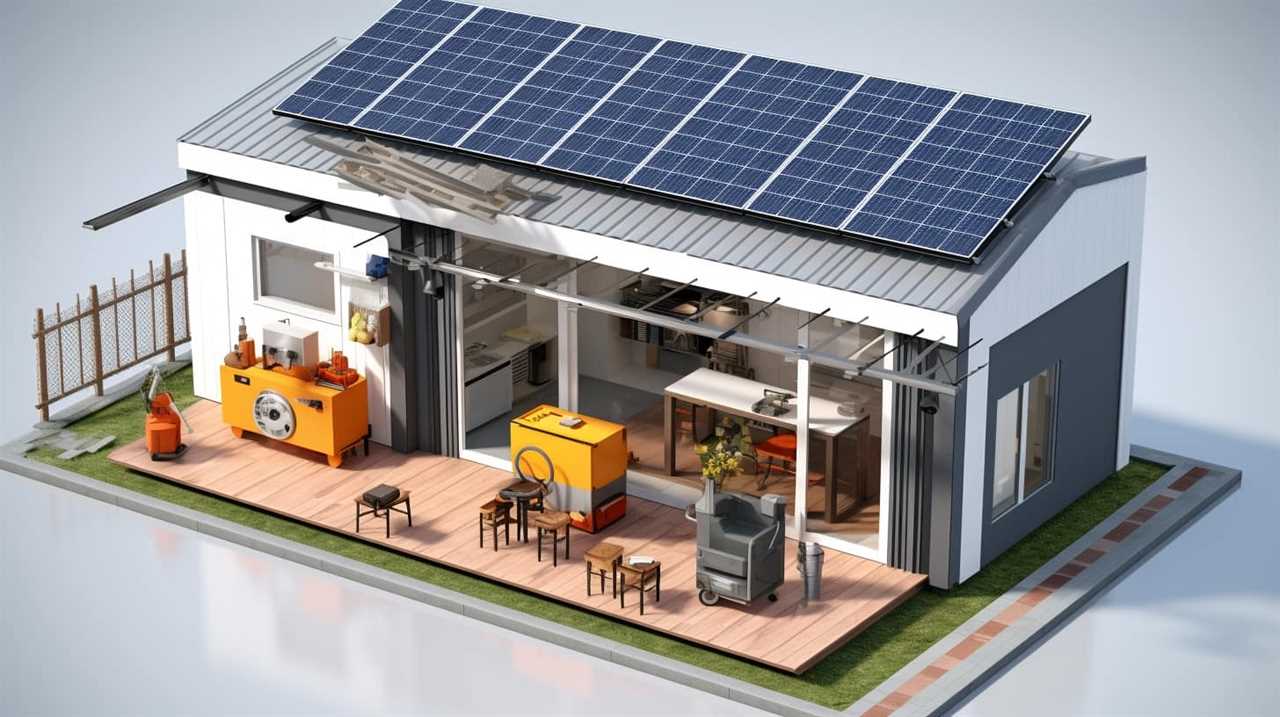
Aphids are small, pear-shaped insects that cluster on new leaves and buds.
Mealybugs are covered in a white, waxy substance and can be found on the undersides of leaves and in leaf axils.
Whiteflies, as the name suggests, are tiny white insects that fly around when disturbed.
An infestation of these tiny white bugs can cause significant damage to your house plants. Signs of infestation include yellowing leaves, stunted growth, distorted foliage, and a sticky residue called honeydew on the leaves. Furthermore, these pests can transmit plant diseases, weaken the plant’s immune system, and attract other pests.
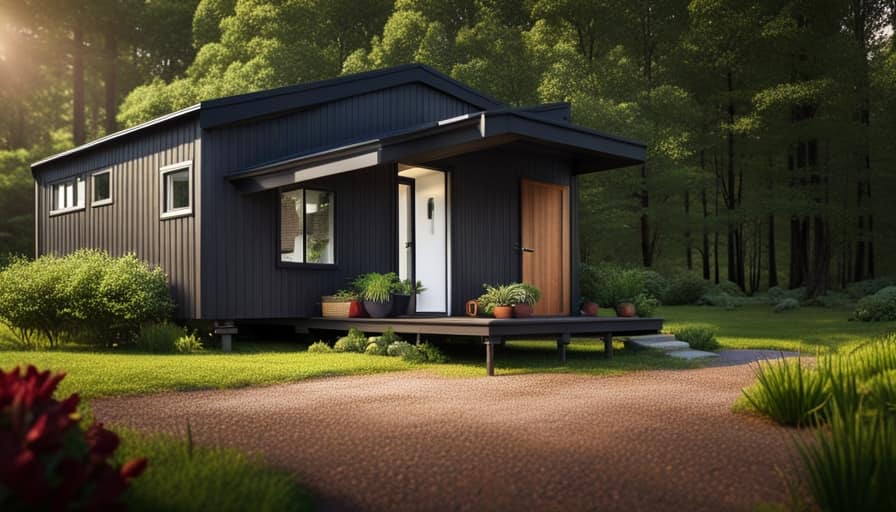
Understanding the causes of infestation is crucial in effectively getting rid of these tiny white bugs on your house plants.
Understanding the Causes of Infestation
Understanding the causes of infestation is essential in effectively eliminating these tiny white bugs on my house plants. Here are a few key factors to consider:
- Lack of proper plant care: Neglecting to provide adequate water, sunlight, and nutrients can weaken plants, making them more susceptible to bug infestations.
- Overwatering: Excessive moisture can create a favorable environment for pests like aphids and mealybugs.
- Bringing infested plants indoors: Introducing plants from outside without proper inspection can bring unwanted bugs into your home.
Recognizing the signs of bug damage is crucial for preventing infestation. Look out for yellowing, wilting leaves, sticky residue on leaves and stems, and tiny white bugs crawling on the plant’s surface.
Now that we understand the causes of infestation, let’s explore natural remedies to eliminate these pesky bugs.

Natural Remedies to Eliminate the Bugs
To effectively get rid of these tiny white bugs on my house plants, I’ll need to rely on natural remedies that can eliminate them without harming the plants.
One effective option is to create homemade insecticides using ingredients readily available in your kitchen. You can mix a solution of water and dish soap, or water and neem oil, and spray it directly on the affected plants. These solutions work by suffocating the pests and disrupting their feeding patterns.
Another natural approach is to introduce insect-repelling plants into your garden. Plants like lavender, mint, and marigold emit fragrances that repel insects, keeping them away from your precious plants.
Chemical Solutions for a Lasting Bug-Free Environment
One effective chemical solution for achieving a bug-free environment is using a professional-grade insecticide spray. These sprays are specifically formulated to target and eliminate pests, including tiny white bugs on house plants. When using a professional-grade insecticide spray, it’s important to follow the instructions provided by the manufacturer to ensure safe and effective use.
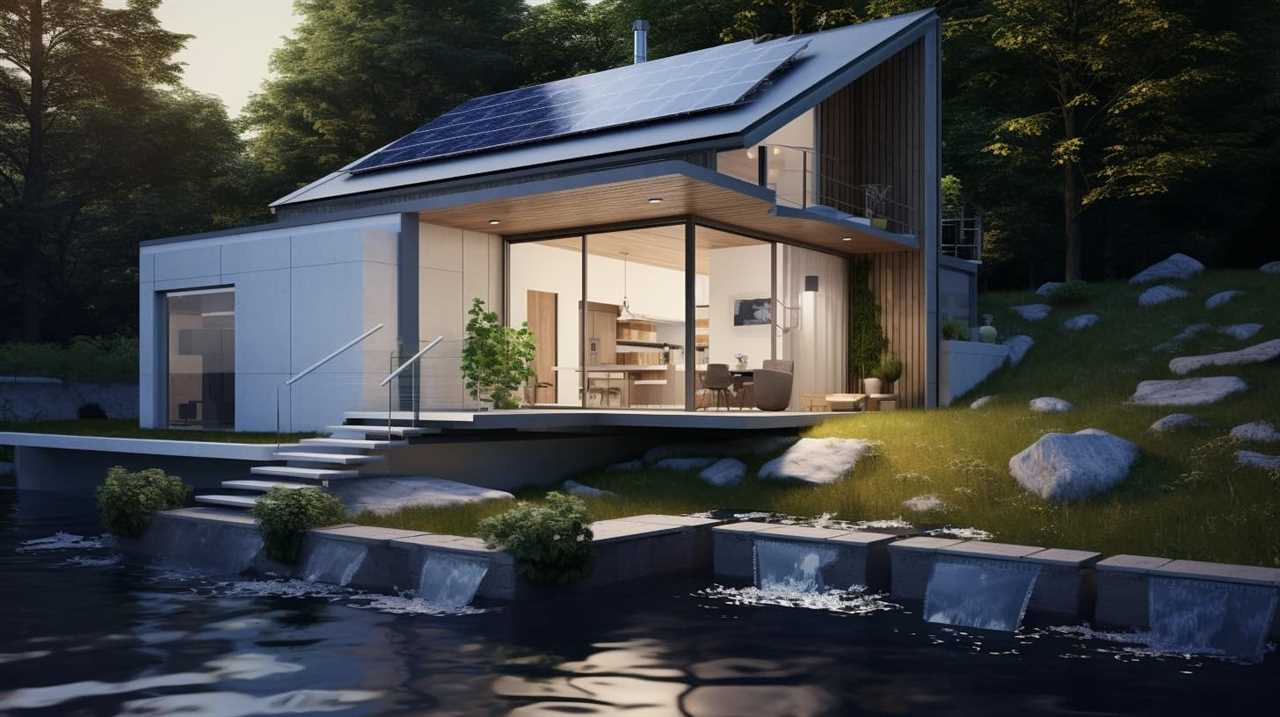
Additionally, consider these non-toxic alternatives to chemical solutions for pest control:
-
Neem oil: Derived from the neem tree, neem oil is a natural insecticide that can be effective against a wide range of pests. It works by disrupting the insect’s life cycle and repelling them from plants.
-
Insecticidal soap: Made from potassium salts of fatty acids, insecticidal soap works by suffocating pests on contact. It’s safe to use on most plants and can be an effective solution against white bugs.
-
Diatomaceous earth: This powdery substance is made from fossilized remains of diatoms and acts as a desiccant, drying out and killing insects.
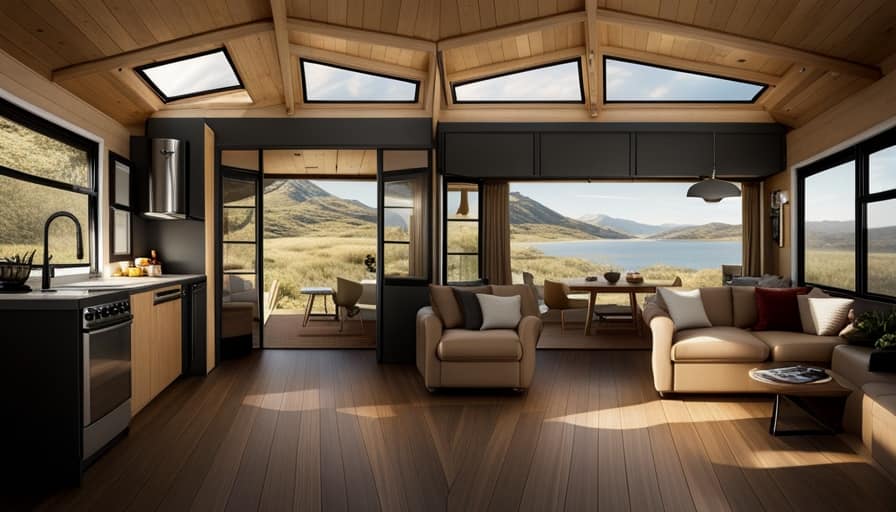
When using any chemical solution or non-toxic alternative, it’s essential to monitor the plants closely and repeat the treatment as necessary to maintain a bug-free environment. Professional pest control services can also provide expert guidance and assistance in achieving long-lasting results.
Preventing Future Infestations and Maintaining Healthy House Plants
To effectively prevent future infestations and maintain healthy house plants, I will implement a regular cleaning and inspection routine. This will help ensure that any signs of pests or diseases are detected early on and addressed promptly. Regularly cleaning the leaves and stems of my plants with a mild soap and water solution will help remove any dust or debris that can attract pests. Additionally, I will inspect the plants for any signs of infestation, such as white bugs or sticky residue on the leaves. To further enhance plant hygiene, I will also consider using beneficial insects, such as ladybugs or lacewings, which feed on common plant pests like aphids. By incorporating these practices into my routine, I can maintain healthy house plants and prevent future infestations.
| Regular Cleaning | Inspection Routine | Using Beneficial Insects |
| Remove dust and debris | Check for signs of infestation | Introduce ladybugs or lacewings to control pests |
| Promotes plant hygiene | Detect and address issues early | Natural pest control method |
| Prevents pest attraction | Maintain healthy house plants | Encourages ecosystem balance |
Frequently Asked Questions
Can These Tiny White Bugs Harm Humans?
Yes, tiny white bugs on house plants can harm humans. They can cause skin irritations and allergic reactions. It’s important to take steps to prevent infestations, such as regularly inspecting and cleaning your plants.
How Long Does It Take for Natural Remedies to Eliminate the Bugs Completely?
To completely eliminate the tiny white bugs using natural remedies, it typically takes a few weeks of consistent application. However, the effectiveness of these remedies can vary. It’s important to avoid common mistakes like under-applying or using incorrect remedies.
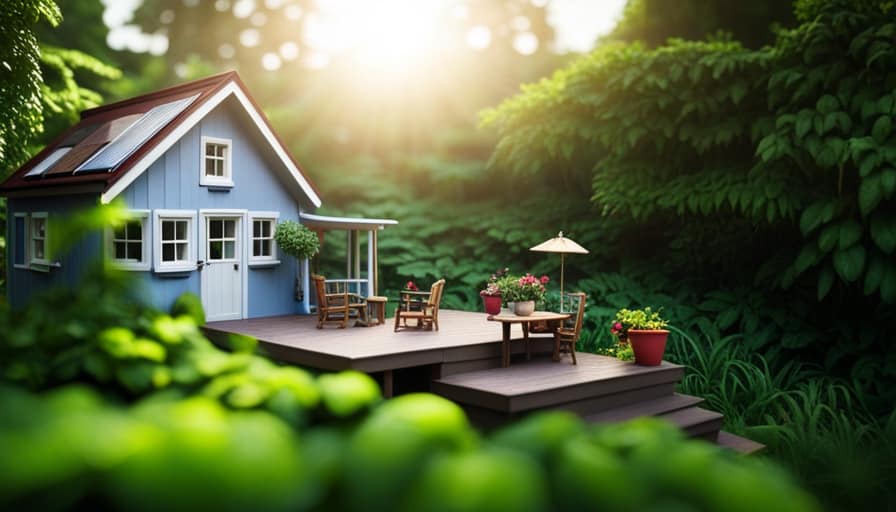
Are There Any Specific Types of House Plants That Are More Prone to Infestations?
Certain house plants, like lavender and marigolds, have natural repellent properties that can help prevent infestations. It’s important to choose plants that are known to repel bugs and to regularly inspect and clean your plants to avoid any potential infestations.
Can These Bugs Spread From One House Plant to Another?
Oh, the joy of tiny white bugs on house plants! Yes, these pests can spread from one plant to another. To control them, use insecticides and watch out for signs of infestation like sticky residue or wilting leaves.
How Often Should I Check My House Plants for Signs of Infestation?
I check my house plants for signs of infestation regularly to ensure their health. Common signs include tiny white bugs and yellowing leaves. Preventative measures like proper watering and cleaning can help keep plants bug-free.
Conclusion
In conclusion, taking care of our house plants goes beyond watering and sunlight. Identifying and eliminating tiny white bugs is a crucial part of maintaining a healthy environment for our plants.
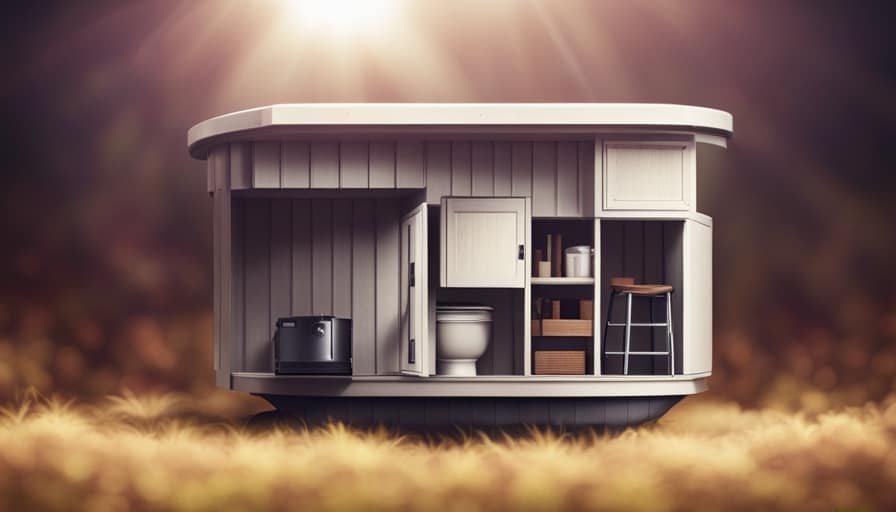
By understanding the causes of infestation and using natural or chemical remedies, we can ensure a bug-free environment. Remember, prevention is key, so regularly inspect your plants and take necessary measures to keep them thriving.
Happy gardening!
I’m Theodore, and I love tiny houses. In fact, I’m the author of Tiny House 43, a book about tiny houses that are also tree houses. I think they’re magical places where imaginations can run wild and adventures are just waiting to happen.
While tree houses are often associated with childhood, they can be the perfect adult retreat. They offer a cozy space to relax and unwind, surrounded by nature. And since they’re typically built on stilts or raised platforms, they offer stunning views that traditional homes simply can’t match.
If you’re looking for a unique and romantic getaway, a tree house tiny house might just be the perfect option.
Beginners Guides
How Do I Get Rid of Tiny Moths in My House

I have experienced the frustration of dealing with tiny moths flying around my food in the kitchen. But do not worry, I have a solution for you.
In this article, I’ll show you how to banish those pesky moths from your house for good. We’ll dive into identifying different moth species, understanding what attracts them, and simple prevention techniques you can implement.
Plus, I’ll share some natural remedies and professional options as a last resort. Say goodbye to those unwanted guests!
Key Takeaways
- Identifying the specific moth species is crucial for implementing targeted control measures.
- Moths are attracted to food sources, fabrics, and organic materials, so it’s important to store food in airtight containers and keep the house clean.
- Moths prefer dark, undisturbed areas to lay their eggs, so sealing cracks and openings in walls, windows, and doors can help prevent infestation.
- If natural remedies and DIY methods fail, it is advisable to seek professional pest control services for thorough inspection and tailored treatment plans.
Identifying the Culprits: What Type of Moth Is Invading Your Home
I can’t figure out what kind of moth is infesting my home. It’s frustrating not knowing the exact species, as different moths have different behaviors and habits. Identifying the culprits is crucial in order to effectively address the problem.
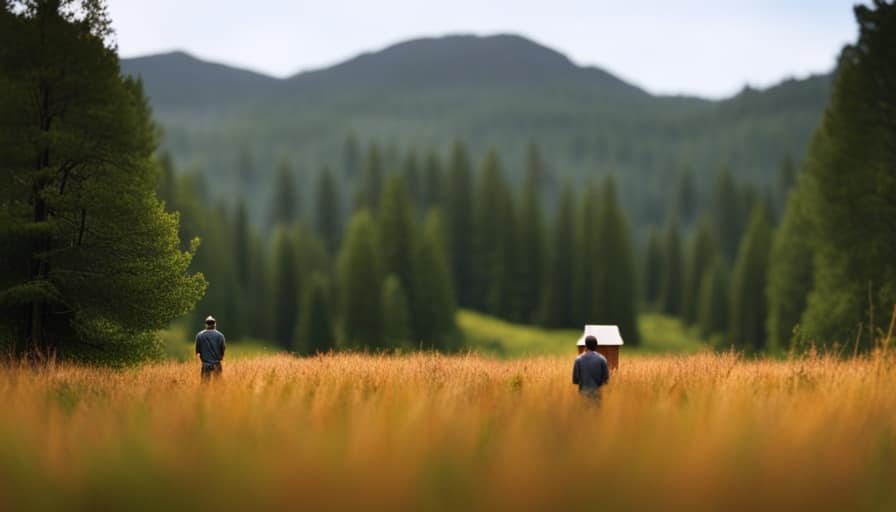
There are several common moth species that are known to invade homes, such as the Indian mealmoth, clothes moth, and pantry moth. Each species has distinct characteristics that can help with identification. Understanding their behavior is also important as it can give insights into their lifecycle and potential sources of infestation.
Moths are attracted to food sources, fabrics, and other organic materials. They can lay eggs in stored grains, textiles, or even pet food. By understanding the specific species and their behavior, it becomes easier to implement targeted control measures and prevent further infestations.
Understanding the Infestation: Why Are Moths Attracted to Your House
To effectively address the infestation, it’s essential to understand why moths are attracted to your house. Here are four reasons why moths may be flocking to your home:
-
Food sources: Moths are attracted to food, especially grains, cereals, and dried fruits. They can easily find their way into your pantry and feast on these items.
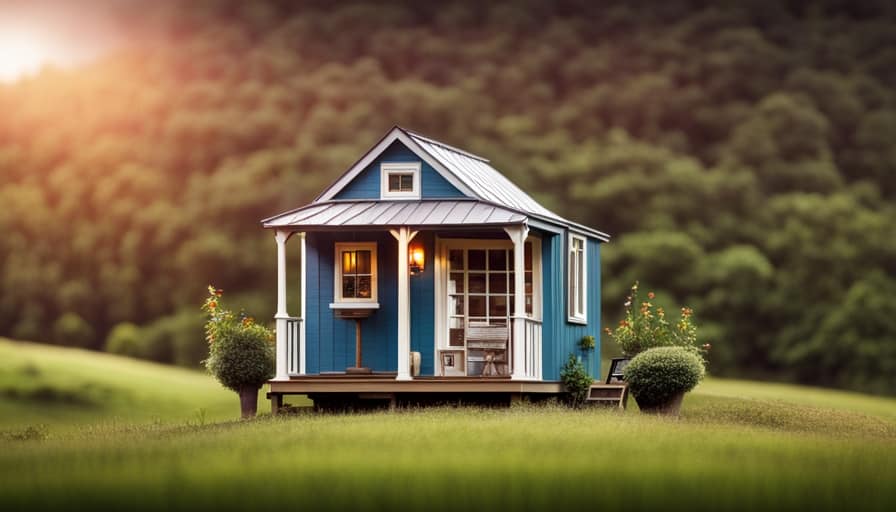
-
Moisture and humidity: Moths thrive in damp environments, making your house an ideal breeding ground if there are areas with high humidity or water leaks.
-
Suitable habitat: Moths are drawn to dark, undisturbed areas where they can lay their eggs undisturbed. This includes closets, attics, and basements.
-
Outdoor attraction: Moths can be attracted to your house from the outside, especially if you have outdoor lights that are left on at night.
Understanding moth behavior and their attraction to your house is crucial in preventing further infestation. By addressing these factors, you can take steps to keep moths at bay and protect your home.

Here are some moth prevention tips:
- Store food in airtight containers.
- Keep your house clean and free of crumbs or spills.
- Fix any leaks or moisture issues promptly.
- Use moth repellents or traps in vulnerable areas.
Prevention Is Key: Simple Steps to Keep Moths From Entering Your Home
Prevention is essential, so I’ll share some simple steps to keep moths from entering your home. By taking a proactive approach, you can create an inhospitable environment for moths and minimize the risk of infestations. One effective method is to use moth repellent products, such as sachets or sprays, in areas where moths are commonly found. These repellents contain chemicals that deter moths from entering your home. Additionally, it is crucial to seal any cracks or openings in your walls, windows, and doors. Moths can easily slip through these tiny gaps, so using caulk or weatherstripping can help keep them out. Regularly vacuuming and cleaning your home can also eliminate moth eggs or larvae that may be hiding in carpets or corners. By implementing these preventive measures, you can ensure a moth-free home environment.
| Steps to Keep Moths Away | |
|---|---|
| Use moth repellent products | Seal cracks and openings |
| Regularly vacuum and clean |
Natural Remedies: Non-Toxic Solutions to Get Rid of Moths
One effective way to get rid of moths naturally is by using a combination of vinegar and water to create a non-toxic moth spray. Here are some natural remedies you can try:
-
Vinegar and water spray: Mix equal parts vinegar and water in a spray bottle. Spray this solution on areas where moths are present, such as closets, drawers, and pantry shelves. The strong odor of vinegar repels moths and prevents them from laying eggs.
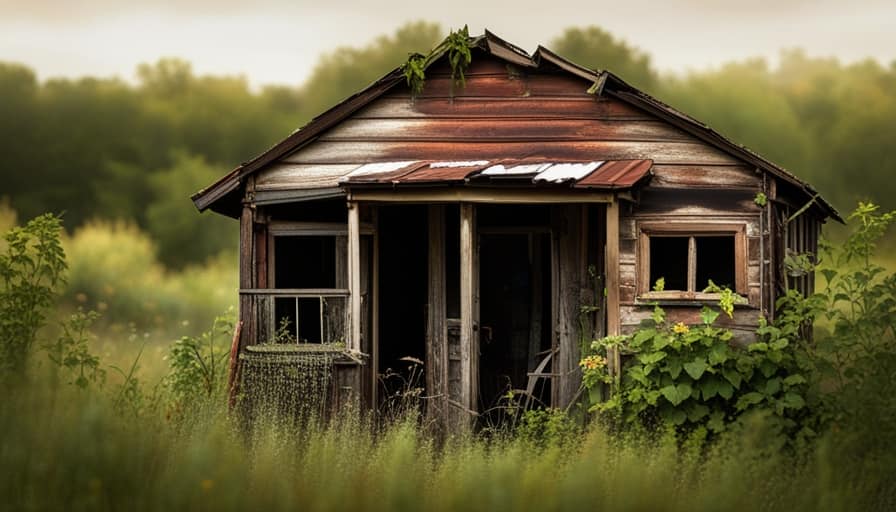
-
Cedar chips: Moths dislike the smell of cedar, so placing cedar chips in your closets and drawers can help deter them. You can also use cedar oil or cedar sachets for the same effect.
-
Homemade traps: Create simple moth traps by placing a mixture of vinegar, sugar, and dish soap in a bowl. The sweet scent attracts moths, and the dish soap traps them when they try to land on the mixture.
-
Lavender sachets: Moths are repelled by the fragrance of lavender. Place dried lavender in small sachets and tuck them in your clothing drawers or hang them in your closets.
These natural repellents and homemade traps can help you get rid of moths without using toxic chemicals. However, if these methods fail to eliminate the infestation, it may be time to consider professional pest control options.

Last Resort: When All Else Fails, Professional Pest Control Options
If I’ve exhausted all other options, I’ll contact a professional pest control service to eliminate the moth infestation in my house. While natural remedies and DIY methods can be effective for small infestations, sometimes the problem persists or worsens despite our best efforts.
This is when it’s crucial to call in the experts. Professional pest control services have the knowledge, experience, and resources to effectively eradicate moth infestations. They’ll conduct a thorough inspection of your home to identify the source of the infestation and develop a tailored treatment plan.
The benefits of hiring professionals include their expertise in identifying different moth species, their access to specialized equipment and pesticides, and their ability to ensure the complete eradication of the infestation.
When all else fails, it’s best to rely on the expertise of professional pest control services to rid your home of those persistent moths.

Frequently Asked Questions
Can Moths Cause Any Damage to My House or Belongings?
Moths can cause damage to fabrics, carpets, and stored food. It’s important to address a moth infestation promptly. Using natural moth repellents, like lavender or cedar, can help deter them from your house and protect your belongings.
Are All Types of Moths Attracted to Homes, or Are There Specific Species That Are More Common?
In the world of moths, certain species have a penchant for our cozy homes. Understanding the types commonly found indoors can help us prevent the dreaded infestations from taking hold in the first place.
How Long Does It Usually Take to Get Rid of a Moth Infestation Using Natural Remedies?
Using natural remedies to get rid of a moth infestation can be effective, but the time it takes varies depending on the severity. Common signs of an infestation include sightings of adult moths and larvae, as well as damaged fabrics or food products.
Can Moths Carry Diseases or Pose a Health Risk to Humans?
Moths can transmit diseases to humans, so it’s important to take precautions. Individuals with allergies or asthma may experience respiratory issues due to moth infestations in homes.

Are There Any Specific Plants or Herbs That Repel Moths and Can Be Used as Natural Remedies?
Using natural moth repellents, such as specific plants and herbs, offers several benefits over chemical alternatives. Creating a moth repelling garden with lavender, rosemary, and mint can effectively deter moths from your house.
Conclusion
In conclusion, it’s essential to address the presence of these minuscule pests in your home promptly. By identifying the specific type of moth invading your space and understanding their attraction, you can take preventive measures to keep them at bay.
Utilizing natural remedies and seeking professional pest control services as a last resort will ensure a moth-free environment without compromising your household’s well-being.
Stay vigilant and employ these effective methods to bid farewell to these unwelcome visitors.

I’m Theodore, and I love tiny houses. In fact, I’m the author of Tiny House 43, a book about tiny houses that are also tree houses. I think they’re magical places where imaginations can run wild and adventures are just waiting to happen.
While tree houses are often associated with childhood, they can be the perfect adult retreat. They offer a cozy space to relax and unwind, surrounded by nature. And since they’re typically built on stilts or raised platforms, they offer stunning views that traditional homes simply can’t match.
If you’re looking for a unique and romantic getaway, a tree house tiny house might just be the perfect option.
Beginners Guides
How Difficult Is It to Build a Tiny House in Colorado Springs

I understand your concerns about building a tiny house in Colorado Springs. However, I can assure you that with the proper knowledge and guidance, it is completely achievable.
In this article, I’ll walk you through the zoning regulations, permitting process, finding suitable land, and navigating building codes. We’ll also discuss securing financing, budgeting, and dealing with utilities.
So, if you’re ready to embark on this rewarding journey, let’s dive in and make your tiny house dreams a reality.
Key Takeaways
- Zoning regulations and building permits are required for constructing a tiny house in Colorado Springs.
- Finding suitable land that complies with zoning regulations is important for placing a tiny house.
- Familiarizing oneself with local building codes and regulations, and following safety guidelines is necessary.
- Researching various financing options and presenting a detailed budget can increase the chances of securing financing for building a tiny house.
Zoning Regulations and Permitting Process
I’ll need to research the zoning regulations and permitting process before starting to build my tiny house in Colorado Springs. Understanding these regulations is crucial as they dictate where and how I can construct my tiny house.
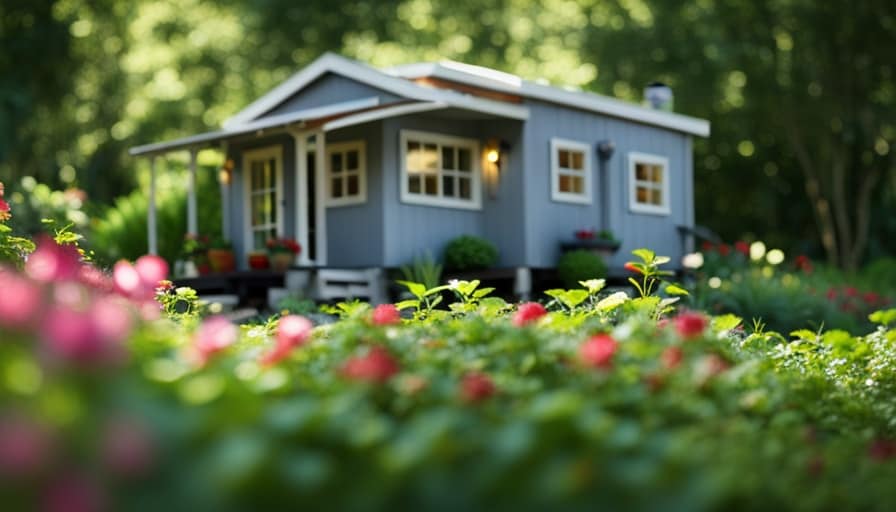
One key aspect to consider is the impact of tiny houses on property values. While some argue that they can decrease property values, others believe that they can actually increase them by adding diversity and uniqueness to the community.
Additionally, one of the challenges I may face is finding legal parking for my tiny house in urban areas. Many cities have restrictions on where tiny houses can be parked, making it essential to find suitable parking options that comply with local regulations.
With these factors in mind, I can now move on to finding suitable land for my tiny house.
Finding Suitable Land for Your Tiny House
After researching the zoning regulations and permitting process, it’s now time to start finding suitable land for my tiny house in Colorado Springs.
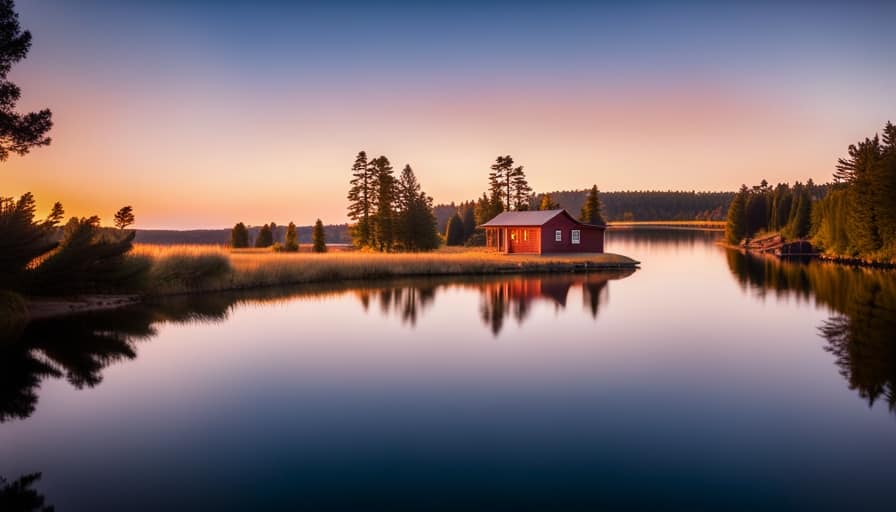
When it comes to finding land for a tiny house, there are a few important factors to consider. One of the major challenges is land availability constraints. Due to the increasing popularity of tiny houses, finding land that allows for their construction can be difficult. It’s important to do thorough research and explore different options, such as contacting local real estate agents or checking online platforms that specialize in tiny house-friendly land.
Additionally, environmental impact considerations are crucial. It’s important to choose a location that minimizes the impact on the surrounding environment and aligns with sustainable practices.
Taking these factors into account will ensure that I find a suitable piece of land for my tiny house in Colorado Springs.
Navigating Building Codes and Inspections
When it comes to navigating building codes and inspections for my tiny house in Colorado Springs, I’ll need to familiarize myself with the local regulations and ensure compliance throughout the construction process. Understanding local regulations is crucial to avoid any legal issues and ensure that my tiny house meets all the necessary requirements.
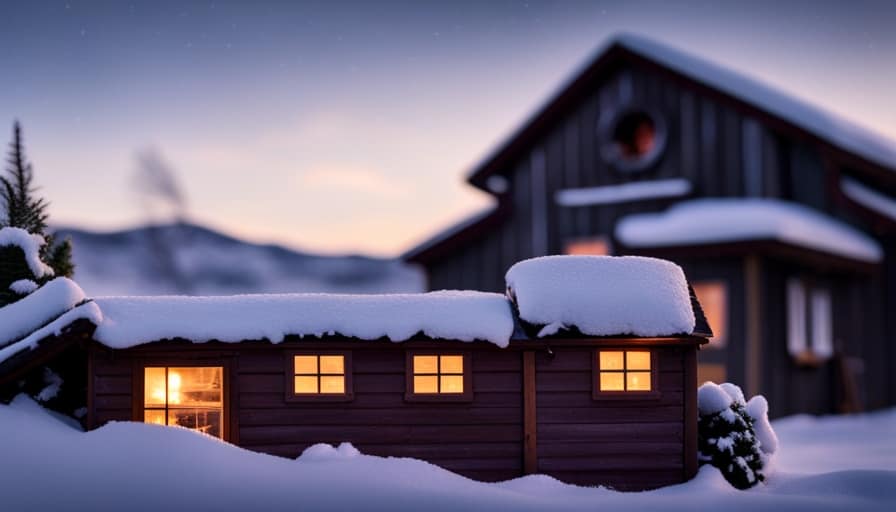
This includes obtaining proper permits, adhering to zoning laws, and following safety guidelines. To ensure a smooth process, I may consider hiring a professional builder who’s well-versed in local building codes and has experience with tiny house construction. Their expertise and knowledge will help me navigate the intricacies of the regulations and ensure that my tiny house is built according to the highest standards.
By understanding the local regulations and working with a professional builder, I can confidently proceed with my project while complying with all necessary codes and inspections.
With the building codes and inspections in mind, the next step is to secure financing and budget for my tiny house project.
Securing Financing and Budgeting for Your Project
To successfully secure financing and budget for my tiny house project in Colorado Springs, I frequently need to research various lenders and explore different funding options. Securing loans for a tiny house can be challenging, as it’s a unique type of project and not all lenders may be familiar with it. However, there are lenders who specialize in providing loans specifically for tiny houses.
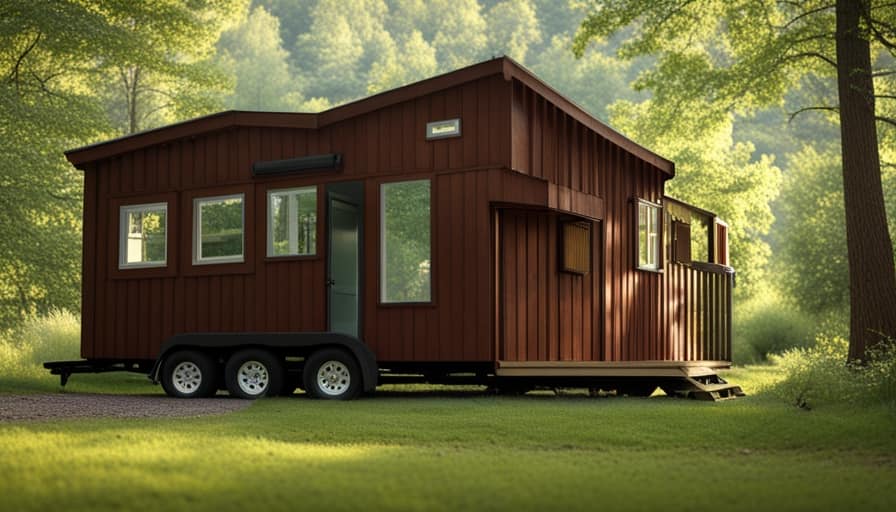
It’s important to gather all the necessary documents and information required by the lenders, such as the cost estimation of the project, including materials, labor, and any additional expenses. By presenting a thorough and well-prepared budget, it increases the chances of securing financing for the project.
Once the financing is secured, it becomes easier to move forward with the next steps of the project, such as dealing with utilities and exploring off-grid options.
Dealing With Utilities and Off-Grid Options
I can explore both traditional utility options and off-grid alternatives when dealing with electricity, water, and sewage in my tiny house in Colorado Springs.
When it comes to off-grid power, there are several options available. Solar panels are a popular choice, harnessing the energy of the sun to generate electricity. Wind turbines can also be used to generate power, particularly in areas with consistent wind patterns. Additionally, hydroelectric power can be harnessed if there’s a suitable water source nearby.
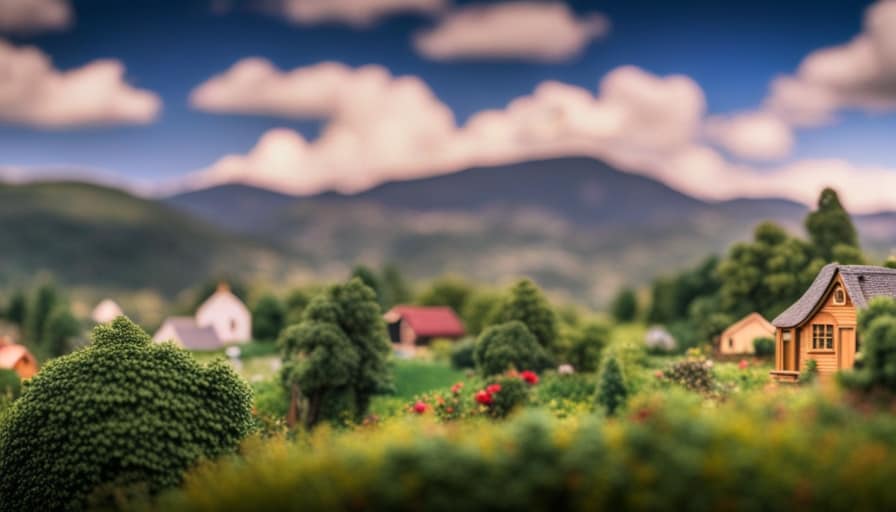
As for water sources, rainwater collection systems can be installed to capture and store rainwater for household use. Digging a well is another option, although it may require permits and additional expenses.
Lastly, composting toilets can be used to manage sewage in an off-grid tiny house, eliminating the need for traditional plumbing systems.
Frequently Asked Questions
What Are the Advantages of Building a Tiny House in Colorado Springs Compared to Other Cities in Colorado?
Building a tiny house in Colorado Springs has many advantages compared to other cities in Colorado. The city has a thriving tiny house community, supportive regulations, and an abundance of natural beauty to enjoy.
Are There Any Specific Design Requirements for Tiny Houses in Colorado Springs?
There are specific design requirements for tiny houses in Colorado Springs, including building regulations that must be followed. It is important to be knowledgeable about these requirements to ensure a successful and compliant build.

How Long Does the Zoning and Permitting Process Usually Take in Colorado Springs?
The zoning and permitting process in Colorado Springs can be a challenge. It takes time to navigate through the requirements and obtain the necessary approvals. However, with proper guidance and patience, it is possible to build a tiny house in Colorado Springs.
Are There Any Restrictions on Living in a Tiny House on Wheels in Colorado Springs?
Living in a tiny house on wheels in Colorado Springs comes with restrictions. Tiny house parking options are limited, and building codes for tiny houses must be followed. It can be challenging, but not impossible.
Can I Rent Out My Tiny House as an Airbnb in Colorado Springs?
Renting out a tiny house as an Airbnb in Colorado Springs is possible, but there are regulations to follow. It’s important to familiarize yourself with local zoning laws and obtain any necessary permits before listing your tiny house as a rental property.
Conclusion
Building a tiny house in Colorado Springs may be challenging due to zoning regulations, finding suitable land, navigating building codes, securing financing, and dealing with utilities.
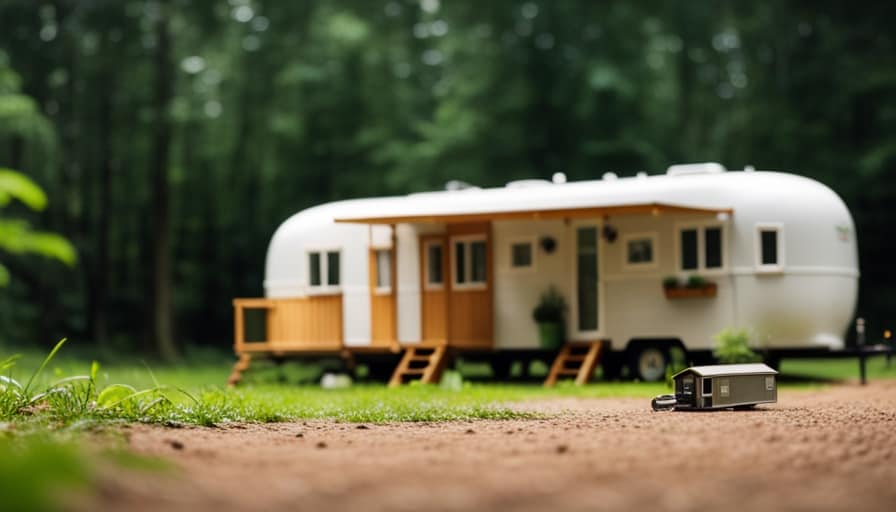
However, with determination and thorough research, it’s possible to overcome these obstacles.
For example, Sarah, a Colorado Springs resident, successfully built her own off-grid tiny house by carefully selecting land outside city limits, obtaining the necessary permits, and utilizing solar power.
Her experience demonstrates that with proper planning and knowledge, building a tiny house in Colorado Springs can be a rewarding and sustainable endeavor.
I’m Theodore, and I love tiny houses. In fact, I’m the author of Tiny House 43, a book about tiny houses that are also tree houses. I think they’re magical places where imaginations can run wild and adventures are just waiting to happen.
While tree houses are often associated with childhood, they can be the perfect adult retreat. They offer a cozy space to relax and unwind, surrounded by nature. And since they’re typically built on stilts or raised platforms, they offer stunning views that traditional homes simply can’t match.
If you’re looking for a unique and romantic getaway, a tree house tiny house might just be the perfect option.
-

 Beginners Guides2 weeks ago
Beginners Guides2 weeks agoHow To Buy A Tesla Tiny House
-

 Energy Efficiency2 months ago
Energy Efficiency2 months agoBest Tiny Homes For Cold Climates
-

 Beginners Guides1 week ago
Beginners Guides1 week agoTiny House Nation Where Are They Now Stephanie
-

 Tiny House Resources (e.g., legalities, cost, insurance, FAQs)2 months ago
Tiny House Resources (e.g., legalities, cost, insurance, FAQs)2 months agoDo Tiny Homes Need Planning Permission?
-

 Beginners Guides3 weeks ago
Beginners Guides3 weeks agoFrom The Show Tiny House Nation How Many Keep Their Tiny House?
-

 Beginners Guides2 months ago
Beginners Guides2 months agoUsing a Climbing Net For Treehouse Construction
-

 Beginners Guides2 months ago
Beginners Guides2 months agoHow to Build a Treehouse Without Drilling Into the Tree
-

 Beginners Guides3 weeks ago
Beginners Guides3 weeks agoTiny House Nation Who Pays For The Houses





